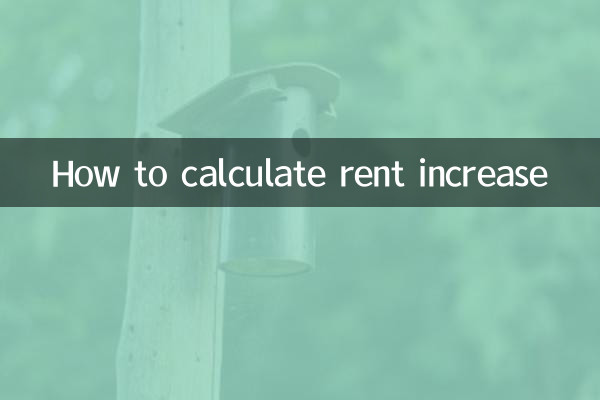How to calculate rent increase
In recent years, with the fluctuation of the real estate market and the standardization of the rental market, the issue of rent increase has become the focus of attention of tenants and landlords. This article will combine the hot topics and hot content on the Internet in the past 10 days, analyze the calculation method of rent increase in detail, and provide structured data for reference.
1. Background and Current Situation of Rent Increase

According to recent hot discussions, rent increases are mainly affected by the following factors: inflation, rising regional housing prices, policy adjustments, etc. Many cities clearly stipulate rent escalation clauses in lease contracts, but the specific calculation method remains controversial.
| Influencing factors | Specific performance | degree of influence |
|---|---|---|
| inflation | Rising prices lead to increased costs for landlords | medium |
| Regional house prices rising | Rising housing prices in surrounding areas push rents upward | high |
| policy adjustment | New leasing policy sets limits on rent increases | Low |
2. Common calculation methods for rent increments
At present, the main methods for calculating rent increments are as follows:
| Calculation method | formula | Applicable scenarios |
|---|---|---|
| Fixed ratio increment | New rent = original rent × (1 + increasing rate) | long term lease contract |
| CPI linkage | New rent = original rent × (1 + CPI increase) | Policy norm area |
| market price adjustment | New rent = average market rent in the same area | Short term rental or flexible adjustment |
3. Things to note when rent increases
1.Contractual agreement: The rent increase must be clearly agreed in the lease contract, otherwise the landlord has no right to unilaterally increase the rent.
2.Increase limit: Some cities have clear regulations on rent increases, such as not exceeding 5% or 10%, and local policies must be followed.
3.Negotiation and communication: Tenants and landlords should communicate in advance to avoid disputes arising from rent increases.
4. Case analysis
The following is an actual example from a recent hot discussion:
| Case background | Original rent | Increasing proportion | new rent |
|---|---|---|---|
| Apartment rental in a certain city | 5,000 yuan/month | 5% | 5250 yuan/month |
In this case, the landlord increased the rent according to a fixed proportion stipulated in the contract, and the tenant continued to perform the contract after accepting it.
5. Summary and suggestions
Rent increases are a common phenomenon in the rental market, but they must be carried out legally and reasonably. Tenants should read the terms of the contract carefully to understand how rent increases are calculated; landlords need to abide by laws and regulations to avoid excessive rent increases. Only through friendly negotiation can both parties achieve a long-term and stable leasing relationship.
If you want to know more about the specific policy or calculation method of rent increment, it is recommended to consult a professional lawyer or real estate agency.

check the details

check the details